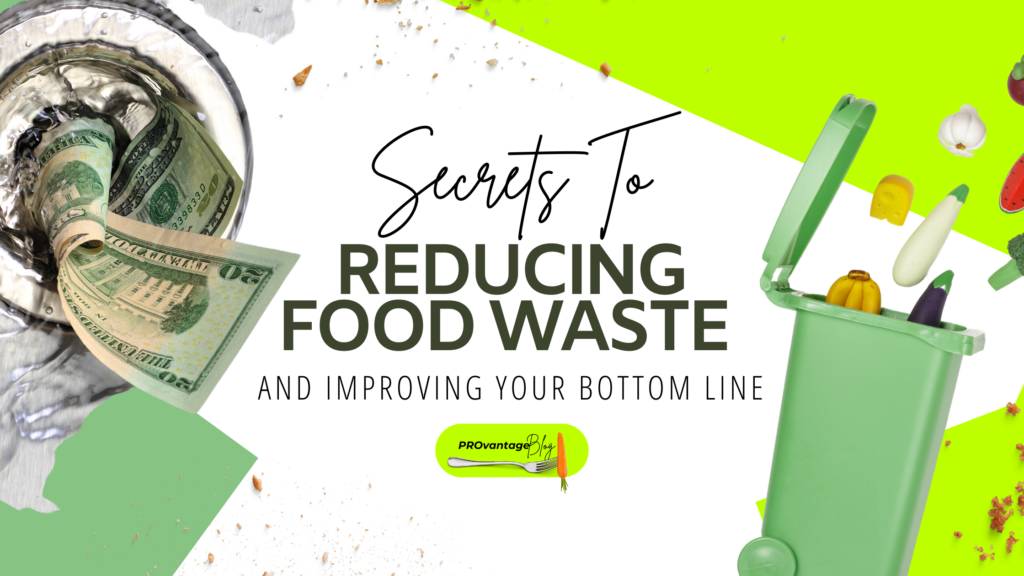Secrets to Reducing Food Waste & Improving Your Bottom Line

Your food cost does not end with the invoice for product. Food waste is one of the biggest hidden expenses in any kitchen. Every time you throw out ingredients, you’re tossing money in the trash. The good news? A few strategic changes can help you reduce waste, save money, and even improve your menu. Here’s how:
1. Use the Whole Ingredient
One of the easiest ways to cut food waste is to use every part of your ingredients. Don’t just use the cauliflower florets—turn the stems into a puree or fry them up as a crunchy garnish. Veggie trimmings can be saved for stocks or soups. The more creative you get, the less you’ll throw away.
2. Portion Control
Oversized portions lead to leftovers, and leftovers often lead to waste. Track what’s coming back on plates and adjust portion sizes accordingly. By serving the right amount, you can reduce waste without customers even noticing. You’ll also cut down on food costs while maintaining satisfaction.
3. Monitor Inventory Closely
Over-ordering is a fast track to spoilage. Keep a close eye on your inventory, and make sure you’re rotating stock efficiently (FIFO—first in, first out). Build a system that prevents over-purchasing and encourages the use of ingredients before they expire.

4. Daily Specials to the Rescue
Got ingredients nearing their shelf life? Turn them into daily specials. Offering creative dishes that highlight soon-to-expire items helps you use up ingredients while keeping your menu fresh and exciting. It’s a win for your budget and your customers.
5. Repurpose Leftovers
Instead of tossing leftovers, think of ways to reinvent them. Yesterday’s roasted vegetables can be turned into a frittata or sandwich filling. Extra bread can become croutons or breadcrumbs. By repurposing leftovers, you cut waste and create something new for your customers.
6. Smart Sourcing
Work with suppliers who understand your goals and can provide the right amount of product without excess. Regular communication can ensure you’re not overstocking. Also, sourcing locally and seasonally means fresher ingredients with a longer shelf life, reducing waste from spoilage.

7. Train Your Staff
Your kitchen staff plays a huge role in controlling waste. Teach them how to properly store food, trim ingredients, and keep an eye on portion sizes. By making food waste reduction a team effort, you’ll see immediate improvements in your bottom line.
8. Composting and Donations
When waste is unavoidable, composting is a great option. It reduces landfill impact and can benefit local farmers or community gardens. If your local regulations allow, donating surplus food to shelters or food banks is another way to give back and minimize waste.
9. Track Your Waste
To get serious about reducing waste, you have to know where it’s coming from. Keep a log of what’s being thrown out and why. Is it spoilage? Over-prepped ingredients? Leftover portions? Once you identify patterns, you can adjust your ordering and cooking methods to cut down on waste.
10. Menu Design
Design your menu around ingredients that can be used in multiple dishes. This ensures nothing goes to waste if a dish doesn’t sell as expected. Think about ways to cross-utilize ingredients without compromising variety or quality.
Reducing food waste isn’t just good for the planet—it’s good for your bottom line. By adopting these strategies, you’ll run a more efficient kitchen, cut costs, and maybe even inspire some creativity. After all, necessity is the mother of culinary invention!






